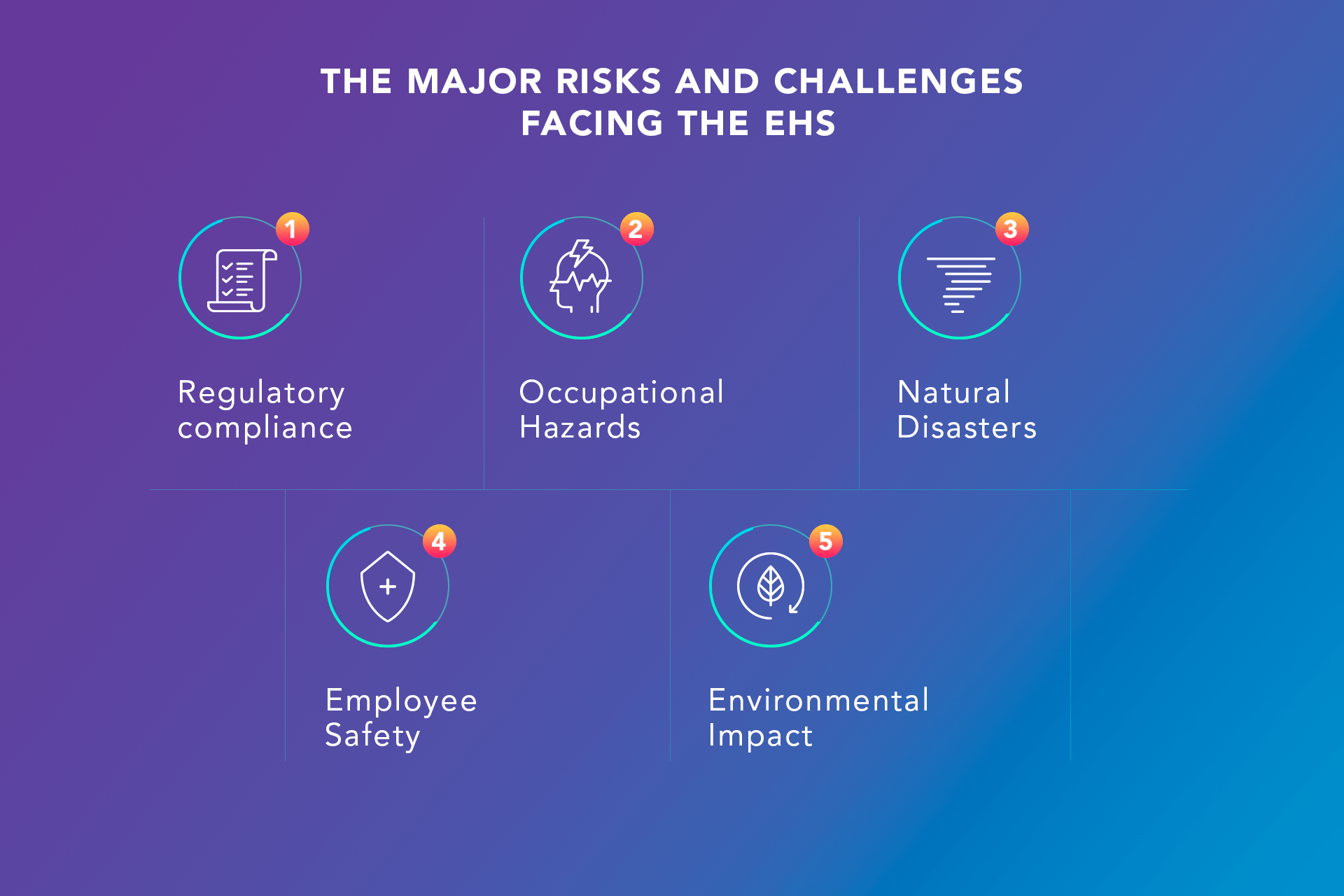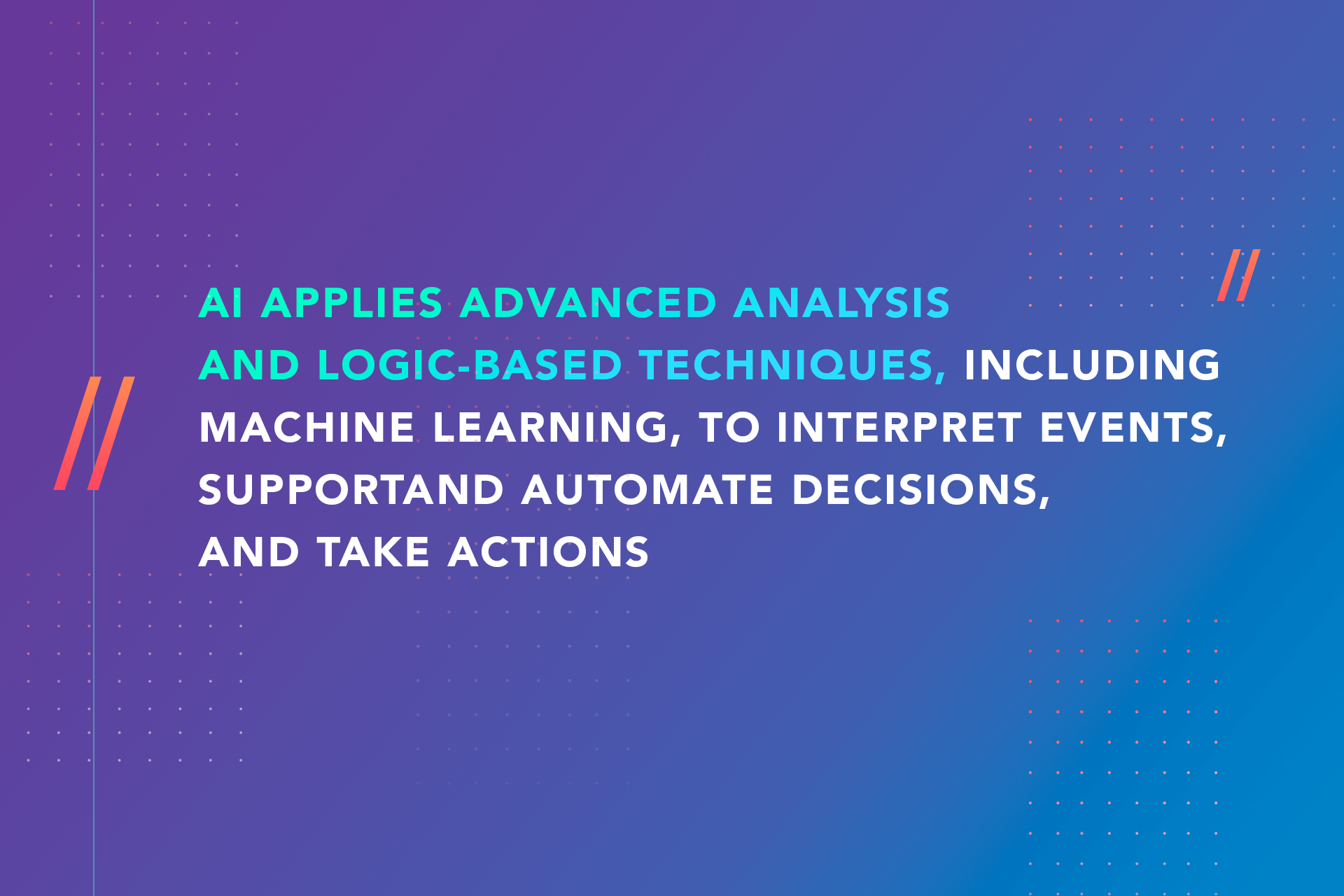Our daily routine is enriched with gadgets and AI-based applications. Instagram, Netflix, Facebook, and digital bank advisors all use AI or related technologies such as Machine Learning (ML) or Deep Learning (DL) to a greater or lesser degree. However, AI is not limited exclusively to the management of our daily routine but can also serve as a useful tool for various industries, complex businesses, as well as substantial departments. If you want to know more, read our previous article.
Environment, Health, & Safety Software
Environment, Health, and Safety, abbreviated as EHS, refers to general environmental regulations aimed at protecting public health and safety as well as the general environment from various hazards. Most large enterprises have to manage their regulatory and corporate responsibilities regarding EHS. As EHS compliance management is very complex and even challenging, enterprises create large EHS teams and departments to control hazards, operational threats, and environmental risks effectively.
Among the major areas of the EHS business field, there are air emission tracking, water, and chemical management, waste and hazardous materials management, safety management, as well as compliance and risk management. Failures in these areas can lead to serious and often long-term consequences for employee health, business success, and environmental welfare.
Vendantix global Survey of 400 EHS Managers states that worldwide spending on EHS is expected to increase by 4% this year, with double-digit budget increases for digital technologies.
Management of EHS performance is a complex process. Complying with ever-changing standards, recording and tracking incidents, assessing risks, and ensuring corrective actions require effort and time, and any inaccuracy or fault may lead to an injury or even a fatality, production loss, and, eventually, harm the company’s reputation.
Major Risks and Challenges Facing the EHS

We will tell you more about each of these risks to understand how they can be solved with the help of artificial intelligence.
Risk #1: Regulatory Compliance
The most challenging area of EHS is ensuring compliance with acting regulations, permits, and licenses. The reason is that the number of various compliance obligations is changing rapidly. In addition, the constantly changing regulatory landscape makes it harder for companies to timely manage compliance tasks, permits, and policy requirements within companies and enterprises. According to Capgemini: “All managers spend over three hours per day on reporting or administration.”
Risk #2: Occupational Hazards
Another important area of EHS refers to maintaining a safe working environment for employees, covering all aspects of technical and facility issues, fall protection, laboratory safety, as well as machinery, lifting and work equipment, etc.
Depending on the type and size of a company, the aforementioned issues may, to varying degrees, require higher or lower priority. The mission of EHS teams and departments is to identify potential occupational hazards and conduct regular workplace inspections to help prevent incidents and injuries.
Risk #3: Natural Disasters
Everything can happen, and no one is immune to catastrophes and force majeure circumstances. Fire and its prevention, rescue, and evacuation plans that can be applied to multiple scenarios of emergencies, such as accidental chemical releases, earthquakes, and floods, are also areas that have to be covered by EHS departments.
Risk #4: Employee Safety
This risk covers all aspects related to employee safety. Among them required compliance with general employee health, a duty of care, personal protective equipment requirements, and employee safety gear monitoring. To limit the effects of this risk, EHS teams provide employees with training and necessary resources to ensure that they keep their health top-of-mind.
Risk #5: Environmental Impact
Another EHS core competence is risks posed to our environment or living organisms by companies’ emissions or inefficient resource usage. Effective management of these risks enables companies to be more sustainable and environmentally friendly.
Artificial Intelligence For Risks Mitigation
Artificial Intelligence (which embraces, in our case, Machine Learning, Computer Vision, and Natural Language Processing) is widely portrayed as the future superpower affecting our daily lives and businesses. With its ability to perform human-like tasks, AI has proven to be an efficient tool for many complex tasks that, in the past, required human labor.
Today, computers and AI-powered software are taking over many human work processes, performing them more efficiently and error-free. Simply put, AI is described as “human intelligence performed by a machine.” According to Gartner:

Based on this statement, we can say that AI using specific machine learning techniques, can understand, analyze, process information, and even make automated decisions.
Machine Learning (ML) enables computers or devices to learn from the input data without human intervention. Due to specially programmed algorithms, machine learning techniques can adjust to new data and improve themselves.
Also important to mention is Deep Learning (DL), which refers to a subset of ML whose algorithms and techniques are similar to ML but whose capabilities are not analogous. The main difference between ML and DL lies in interpreting the data they feed on. In DL, a computer system is trained to perform classification tasks directly from sounds, texts, or images using a large amount of labeled data.
Compliance and Risk Management
By processing high volumes of data ( visual, audio, textual, digital), AI can provide risk and compliance managers with improved recognition of the risks they face, enabling them to spend less time on repetitive tasks and implementing risk and compliance solutions based on AI technology, thus continually enhancing risk management processes.
Risk management software analyzes significant amounts of data and singles out valuable metrics used by a company for expertizing risks. It selects appropriate assessment approaches and, as a result, identifies and prioritizes risks, suggesting the most suitable corrective actions.
AI for Compliance Management
Compliance Management Software based on AI technology can effectively manage compliance processes, meeting all regulatory and policy requirements. By analyzing and processing various regulations, permits, and company reports, AI system makes sure the company operates under all relevant standards. As a result, risk management and compliance procedures achieve maximum transparency, efficiency, simplicity, and control.
AI for Safety Management
AI-powered safety solutions allow enterprises to create a safe workplace environment for employees and reduce risks to human lives. By using computer vision and machine learning, AI-based software can monitor employee safety gear and employee/equipment presence at certain sites. When tracking the entry and exit of employees to the working environment, the system assesses the suitability of their personal protection, including the equipment they carry.

AI for Incident Management
Incident management driven by AI has become an inevitable tool for EHS teams and departments. AI effectively performs such tasks as a proactive prediction of incidents, in-depth incident analysis, and root-cause assessment, as well as finding the most suitable corrective actions for each specific case. The analysis and real-time insights provided by ML algorithms help companies to rapidly respond to occurred incidents, identify patterns, correlate similar events, and get ready to handle incidents that might occur in the future.
Case Study Softengi: Emissions Tracking System for Enviance
Softengi has developed a cutting-edge emissions tracking system for Enviance, the world leader in cloud-based EHS solutions. The system allows efficient tracking and determining of the emissions volume, generates reports, and forecasts prospective emission output.




